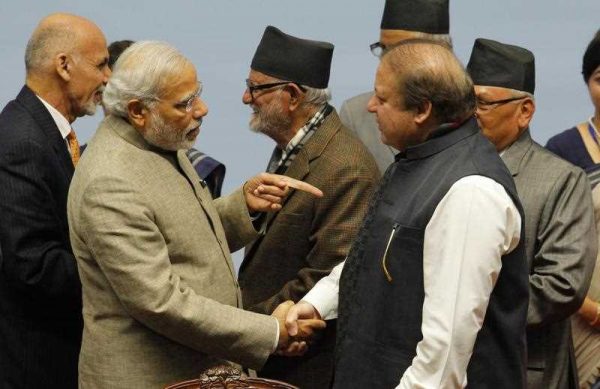Turbulent histories between member states have meant that it has not been easy to achieve the SAARC’s objectives. One major reason for the failure of SAARC is the persistence of political conflicts and disputes among the member states that appear unresolvable in the near future. Over the years, there has been minimal promotion of cooperation in the political, social and economic sectors. Little has been achieved in increasing mutual trust between members. There is still insecurity among SAARC members, especially regarding India’s rapidly emerging dominant role in South Asia.
Divergent economic interests have particularly hindered SAARC’s ability to harness its full potential through economic partnerships. Effective economic policies form an important aspect of any regional bloc. Yet SAARC only took the first step in this direction in 1995 with the launch of the South Asian Preferential Trade Agreement (SAPTA). In the agreement members decided to liberalise with the ultimate objective of achieving a free trade area. And SAARC’s more economically developed countries agreed to assist the less developed countries in the region.
Like various other regional trade agreements SAPTA was expected to generate greater regional output and more effective resource utilisation. But the volume of intra-regional trade increased only marginally. The list of concessions offered under SAPTA included 3857 tariff lines but the major limitation was the actual trade coverage of preferential trade granted. The concessions granted by the countries were not substantial enough to increase the overall trade of the region.
SAPTA failed to take into account the diverse needs of each member state. Member countries should have identified the existing production capabilities of the region and matched them with each member nation’s demand pattern to determine the magnitude of future trade potential. Ultimately, to ensure effective resource mobilisation, countries must also resolve regional disputes and aid each other to achieve self-sufficiency.
In 2006 another attempt was made to strengthen the economic integration of SAARC members with the implementation of the South Asian Free Trade Agreement (SAFTA). This agreement extended the scope of SAPTA to include additional trade facilitation mechanisms and switched the tariff liberalisation process from a positive to a negative list approach in the hope that the SAARC countries would do away with the import tariffs on all goods except the ones reserved under the ‘sensitive lists’. This will facilitate a freer economic integration among the countries. A special consideration in SAFTA was the promise of compensation for small countries suffering revenue losses in the event of tariff reductions.
But the success of SAFTA is also questionable. Political issues between member countries have constantly superseded SAARC’s economic interests.The SAARC has not been able to significantly further economic integration. Nor has it been able to enhance trade considerably.
The agreement faces certain challenges such as a difficult business environment, overcoming port restrictions and increasing product coverage. Port-specific restrictions have increased the transactions costs of trading across borders and have sometimes led to a virtual blockage of imports between the SAARC countries. SAFTA also allows member countries to retain sensitive lists of commodities and services that are out of the concessional ambit. This negative list is often held accountable for the lower volume of intra-regional trade between member countries and limits the scope for achieving a free trade regime.
The existence of restrictive rules concerning trade origin and destination of products reflect a protectionist attitude among members. High tariffs and stringent rules of origin, for example, often lead to inadequate administrative capacity and procedural delays disrupting the easy flow of goods. As a result, members of SAARC indulge in illegal trading activities that are assumed to be easier than legal trade in the region.
South Asian countries now follow a trend of bilateral trade agreements instead of multilateral agreement as the benefits of SAFTA are insignificant for their growing economies.Trade diversion is therefore a common phenomenon in the South Asian Region. Hostility between India and Pakistan has encouraged Pakistan to seek economic support from other developed nations such as China and the United States. Pakistan is presently subjected to preferential tariffs from China and the United States on a large number of products, undermining its contribution to the regional process. Bangladesh and Sri Lanka are also becoming more and more dependent on their international trade with non-SAARC members.
SAARC is slowly but surely becoming a redundant organisation. Strong economic ties through SAFTA would improve SAARC and provide it with the resilience to play a pivotal role in the global context. But two major efforts towards economic integration have failed and caused disappointment across the region. To achieve their aims, member states must resolve their political disputes through discussion and tolerance. Instead of taking short-term decisions, countries need to develop functional mechanisms for strategic decision-making able to facilitate a vision for the future.
SAARC countries share a degree of common social, cultural and historic roots.They can restore friendly relations and progress together, if they are willing to do so.
Akanksha Khullar is an independent researcher based in New Delhi and is currently interning with the Australian High Commission. She has previously conducted research on education and economic equity in India for both the Centre for Civil Society and the Centre for Equity Studies.

